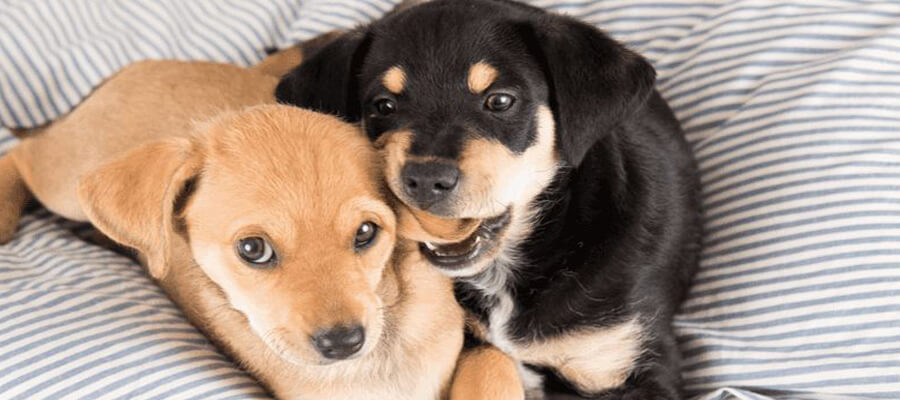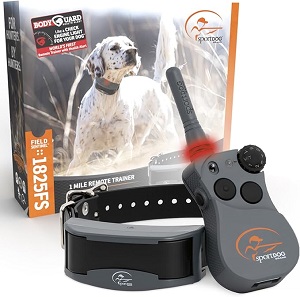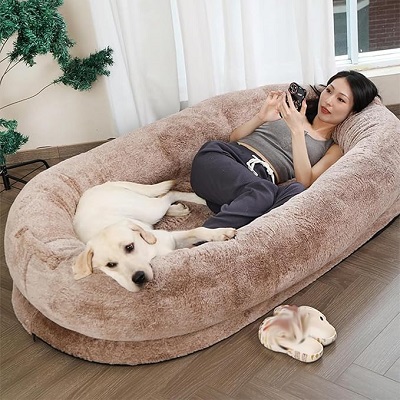
How to Handle a Reactive Dog: Tips for Owners
Handle a Reactive Dog: Tips for Owners
Introduction
Owning a reactive dog can be a challenge, but it’s not an uncommon issue. Reactivity in dogs typically refers to exaggerated emotional responses, such as barking, lunging, or growling, when they’re exposed to certain triggers like other dogs, people, or even specific sounds. These reactions can be overwhelming for both the dog and the owner, leading to stressful walks or anxious situations. The good news is that with patience, training, and consistency, you can help your reactive dog feel more comfortable and in control. In this article, we’ll explore what reactivity is, its causes, and practical tips for handling a reactive dog.
What is Reactivity in Dogs
Reactivity refers to a dog’s overreaction to stimuli in their environment. While all dogs may occasionally react to sudden changes or unfamiliar situations, reactive dogs have a heightened response that can make everyday scenarios difficult to manage. This might include barking and lunging at other dogs, growling at strangers, or getting overly excited or frightened by noises, bicycles, or moving vehicles.
Common Triggers for Reactivity:
- Other dogs or animals
- Strangers or unfamiliar people
- Loud noises (thunderstorms, fireworks, etc.)
- Moving objects (bikes, cars, skateboards)
- New environments or unusual scents
It’s important to note that reactivity is not the same as aggression. Reactive dogs are often responding out of fear, frustration, or overstimulation, rather than an intent to cause harm. Understanding this difference can help owners approach the situation with empathy and the right training strategies.
Essentials for Your Newly Adopted Pet
Welcoming a shelter pet into your life is a beautiful journey. Here are some handpicked items to help your new friend feel safe, loved, and right at home:
Causes of Reactivity in Dogs
There are several reasons a dog might develop reactive behaviors. Identifying the root cause can be helpful in determining the best approach for training and management.
1. Lack of Socialization
Dogs that aren’t adequately socialized during their critical developmental stages (between 3 and 16 weeks old) may become reactive as adults. They may have never learned how to interact calmly with other dogs, people, or new experiences, leading to anxiety or fear.
2. Trauma or Negative Experiences
A dog that has had negative experiences, such as being attacked by another dog or being mistreated by humans, may develop reactive behaviors out of fear or self-defense. Past trauma can create a heightened sense of alertness in dogs, leading to overreactions in certain situations.
3. Frustration-Based Reactivity
Some dogs become reactive out of frustration, often due to being restrained by a leash or fence. For example, a dog that desperately wants to interact with another dog but can’t because of a leash may lunge, bark, or whine out of frustration. This is called leash reactivity and is a common issue for many dogs.
4. Genetics and Breed Tendencies
Certain breeds may be more prone to reactivity due to their genetic makeup. Herding breeds, for instance, may be more sensitive to movement, while guard dogs may be more alert to potential threats. Understanding your dog’s breed tendencies can help tailor your approach to managing their reactivity.
Tips for Handling a Reactive Dog
Managing a reactive dog requires patience, commitment, and a structured approach. Here are some practical tips that can help you handle your dog’s reactivity and reduce stress for both you and your dog.
1. Recognize the Triggers
What to Do: The first step in managing a reactive dog is identifying what triggers their reactivity. Keep a journal of your dog’s behavior, noting when they become reactive and what seems to cause the reaction. For example, does your dog react to other dogs, strangers, loud noises, or moving vehicles Understanding the specific triggers will help you better prepare for and manage situations.
How It Helps: By knowing what triggers your dog, you can take steps to either avoid or gradually desensitize your dog to those triggers. You’ll also be able to anticipate your dog’s reactions and implement training before they escalate.
2. Create Distance from Triggers
What to Do: If your dog becomes reactive, increasing the distance between your dog and the trigger can help reduce their anxiety and reactivity. Cross the street if another dog is approaching, or turn around if you see a potential trigger ahead. Moving away helps your dog feel safer and less overwhelmed.
How It Helps: Creating physical distance from a trigger can prevent a full-blown reaction and give your dog more time to process the situation. Over time, this will also help your dog build more confidence in handling situations that used to cause reactivity.
3. Use Positive Reinforcement
What to Do: Training a reactive dog involves reinforcing calm behavior in the presence of a trigger. Use treats, praise, or toys to reward your dog for staying calm when exposed to a mild version of their trigger. Start by exposing them at a distance where they don’t react and gradually move closer as they become more comfortable.
How It Helps: Positive reinforcement teaches your dog that good things happen when they remain calm in the presence of a trigger. This helps change their emotional response to the trigger from fear or frustration to a more positive association.
4. Practice Desensitization and Counter-Conditioning
What to Do: Desensitization involves slowly exposing your dog to their triggers in a controlled way. For example, if your dog reacts to other dogs, start by keeping them at a distance where they don’t react, and reward them for calm behavior. Gradually decrease the distance over time while continuing to reward calmness. Counter-conditioning involves pairing the trigger with something positive, like treats, to change your dog’s emotional response.
How It Helps: Over time, desensitization and counter-conditioning help your dog learn that the trigger is not something to fear or react to. With patience, your dog will begin to stay calm and more relaxed in situations that previously caused reactivity.
5. Teach Focus and Attention Commands
What to Do: Teaching your dog basic commands like “watch me” or “focus” can be incredibly helpful in managing reactivity. The goal is to redirect your dog’s attention to you instead of the trigger. Start by practicing in low-stress environments and gradually work up to more challenging situations.
How It Helps: Redirecting your dog’s attention to you during a stressful situation can interrupt their reactive response and give them a clear alternative behavior. Focusing on you also gives them a sense of security and guidance, knowing that you’re in control of the situation.
Tools to Help Manage Reactivity
There are several tools and products available that can help you manage your dog’s reactivity:
- Harnesses with Front Clips: Using a front-clip harness can give you more control over your dog’s movements and reduce pulling during walks.
- Calming Supplements: Some dogs may benefit from calming supplements made with natural ingredients like chamomile or valerian root, which help reduce anxiety in stressful situations.
- Muzzles (If Necessary): For dogs that pose a risk of biting, a muzzle can be a temporary safety measure while working on training. Always introduce a muzzle positively and never use it as punishment.
When to Seek Professional Help
While many reactive dogs can improve with consistent training and management, some cases may require the help of a professional. If your dog’s reactivity is severe or dangerous, working with a certified dog trainer or behaviorist can provide more advanced guidance. A professional can help you design a training plan specific to your dog’s needs and offer additional strategies to manage their behavior.
Conclusion
Handling a reactive dog can be challenging, but with patience, consistency, and the right techniques, you can help your dog feel more confident and in control. By recognizing their triggers, using positive reinforcement, and practicing desensitization, you’ll create a calmer, more enjoyable environment for both you and your dog. Always remember that progress may take time, but every small step forward brings you closer to a happier, more well-adjusted dog. And if you ever feel overwhelmed, don’t hesitate to seek the guidance of a professional to ensure the best outcome for your reactive dog.
Affiliate Products
We may earn a small commission when you shop through our links — it helps us keep sharing love and care for every dog out there, at no extra cost to you.
Up to 75% Discount

Dog Collar with Health Monitoring
BUY NOW »
Up to 55% Discount

Luxury Faux Furhuge Napping Bed
BUY NOW »

